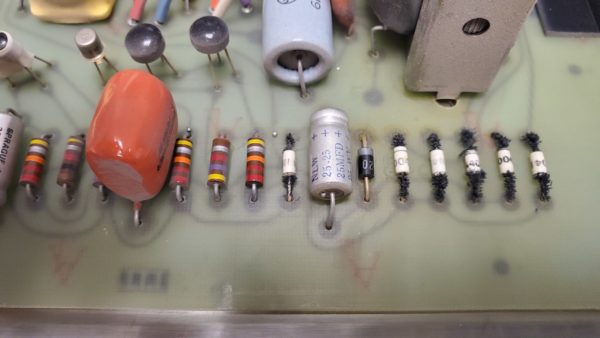After three + months of sheltering in place, things are slowly returning to the “new normal” here in New York state which is where I write this blog. We all know all too well what’s been going on around the world over the past several months so I’m not going to belabor those details here. Let’s just say I was WAY overdue for a haircut! Unfortunately, however, many other activities suffered as well including this blog. When we last spoke, I was about to embark on an effort to again evaluate the perforation of aluminum foil as a way to verify ultrasonic performance in ultrasonic cleaning systems. That work was to (and still will) require considerable lab time. The lab, of course, was not available due to recent events. So I’ll get back to that – stay tuned!

But first, several of you have asked about the “what is it” blog that I left unanswered. The answer is “Tin Pest.” Tin, after a prolonged period of time (the PCB in the picture is over 50 years old), and especially at lower temperatures will grow “fuzz” due to a change in the orientation of atoms within the structure of the tin. Tin objects literally turn to dust!
According to Wikipedia –
At 13.2 °C (about 56 °F) and below, pure tin transforms from the silvery, ductile metallic allotrope of β-form white tin to the brittle, nonmetallic, α-form grey tin with a diamond cubic structure. The transformation is slow to initiate due to a high activation energy but the presence of germanium (or crystal structures of similar form and size) or very low temperatures of roughly −30 °C aids the initiation. There is also a large volume increase of about 27% associated with the phase change to the nonmetallic low temperature allotrope. This frequently makes tin objects decompose into powder during the transformation, hence the name tin pest.
The decomposition will catalyze itself, which is why the reaction speeds up once it starts; the mere presence of tin pest leads to the accelerated growth of more tin pest. Tin objects at low temperatures have been reported to literally disintegrate into dust.
Further reference sources indicate that this transformation will occur with any tin but electroplated tin is especially susceptible. I theorize that the leads of the components exhibiting “tin pest” shown above were plated using an electroplating process. Those leads that appear unaffected appear to be either gold plated or tinned using a dip soldering process. Bell labs discovered in the 1950’s that the addition of lead to tin effectively prevented “tin pest” resulting in the common use of tin solders containing lead.
Implications –
Although “tin pest” growth in the form shown above is virtually non-conductive and is really only a cosmetic issue, there is another form which grows conductive “whiskers.” These whiskers can be incredibly small (think spider web silk sized or less) and cause shorts in electrical circuits. Although it is probably a long shot at best, there are those who are concerned that the lead-free tin solders in use today may in years to come result in the return of “tin pest” as a problem in electrical circuits. Conformal coatings and other precautions in use today will likely prevent this recurrence but it is something to think about.




 English
English Spanish
Spanish Chinese
Chinese Canada
Canada Mexico
Mexico United Kingdom
United Kingdom



